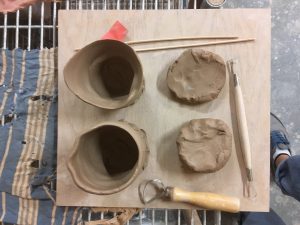Keiro’s presentation – stop-go animation
stop motion (can be downloaded)
used imovie to fade into the graphic
Photo shop
- twinning (allows you to take two photos and then it will make it stop go in between)
Pros
- can be used in any subject to make it fun and engaging
- hits all core competencies
- simple concept that can be taken deep
Cons
- limiting technology available
- its a slow process and then technology can be difficult
- takes time and error can occur
Things to watch for
- camera stability
- time is really needed
- have fun!
REsources
- makerspaceforeducation.com
- iste.org
- onf-nfb.gc.ca
- wiobyrne.com
- waldprotfolio
- education.microsoft.com (lessons for all grades!)
- giphy.com
Google Geographic Products
Google Maps
- google: My Maps (can make own maps including points of interest, save in layers (stores, parks), can colourize icons, can share & collaborate, can change to satellite images)
- can add photos and videos of places, could upload audio and link it to places
- map out: different places in the world using language of place, map fictional settings.
- Street view : can look at natural wonders, talking about being able to go through museums
- Google Cultural Institute – information about cultures, arts, natural wonders, repository of historic documents
Google Earth
- experience – high resolution 3D imagery, can be used for immersive experiences in the class
- find your house – to get them excited about looking at the world
- flight simulator – flying around
- view the past – going back 15-20 years, looking at development land-use change, agriculture, growth
- Layers: different data can be looked at over layed on maps
- Im feeling lucky – click button and get sent to a place
- google moon (immersive interactions with apollo missions, landers, narrated by astronauts), mars, and sky (planets, galaxies, view from telescopes around the world)
- Voyageur : nasa, the bbc, jane goodall, and sesame street teamed up (narrated tours of places around the world)
Lesson Ideas
- 20-questions (pick a place, ask questions have students guess)
- math – maps, measuring, distance
- explore different environments
- can make own tours
- scavenger hunts (coordinates, clues, pictures)
Lessons – My Maps
- Grade 4 curriculum;
- following routes travelled during Euro-western exploration
- make own road trip
- add journal entries in my maps, historical timelines, distances measured
Privacy
- Google can track you if you don’t opt out
- corporations selling information to sell you products
- benefits – convenience
- creation/erasure of national boarders
cartography has nationalism built into it. Originally the way that countries were delineated.
Digital Literacy
Information Literacy
-
-
- what is fake and what is real? how to recognize, quality and credibility
- awareness and critical thinking. who benefits from what is being said, is there bias?
Ethical use
Understanding digital footprint
- what are you sharing, cookies, ip address, passwords, service provider, etc
- what are you leaving behind when you use the internet?
Protecting yourself online
- you have to be critical or what is offered and what you want to leave on the internet.
- vpns, data encryption and hacking
- self-regulation, awareness, screen time
Handling digital communication – cyberbullying
- the internet is a public space
- don’t be a dick
- there is a history of what you say
- would you say what you are about to say to peoples faces? if not, don’t say it
Pros & Cons
Risks
Strategies, Tips, and Best Practice
- Crash Course ; youtube series – navigating digital media (10-11 videos in series), media literacy (amazing for middle school – more intellectual)
- fact checking – double check your info and teach students how to do this
- lateral reading – when discovering new information, looking into who is writing articles, when was it written, is there corporate backing/who published this?
- evaluating evidence
- Mediasmarts.ca
- Canadian specific content (know Can Law, applicable to Canada and BC) includes resources for all stakeholders
- some outdated information
- Choice & Voice
- creation v. consumption (more creation = more interesting, increased awareness)
- multimodalities (diversify, diversify, diversify) – pick meaningful things, but many
- collaboration
- accessibility – make sure learners are given skills to use technology (physical) and apps, go over them
- crowd-accelerated learning (citizen science – using people’s brains to categorize and process; ie NASA sorting galaxies) – involve outside school that are meaningful and authentic
- social learning – spend time on this peer-to-peer interaction, acknowledge role as a social guide.
Parents and Dig Lit
- assume ignorance, figure out parents involvement in their child’s digital life
- is part of BC curriculum (21st century citizens)
- communicate with parent so they understand
- digital engagement family night (class or school wide)
- risks and benefits – be compassionate, explain why, patience
Sex, sexuality and the digital world
- lots of misinformation, single stories, confusion, and shame
- awareness of this, provide positive digital resources where they can find real true information
- internet can be a safe place for all people as they explore sexuality
- common sense education
House hippo – media smarts



Recent Comments